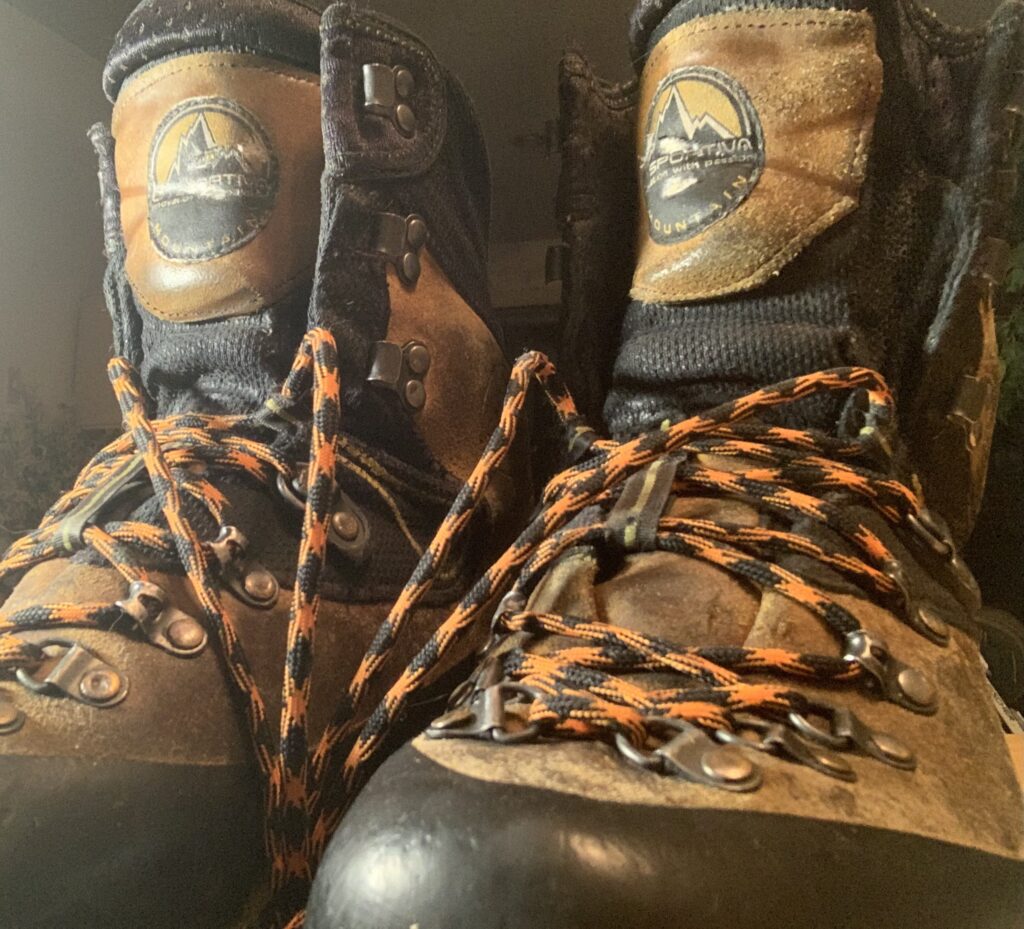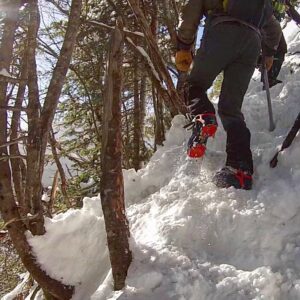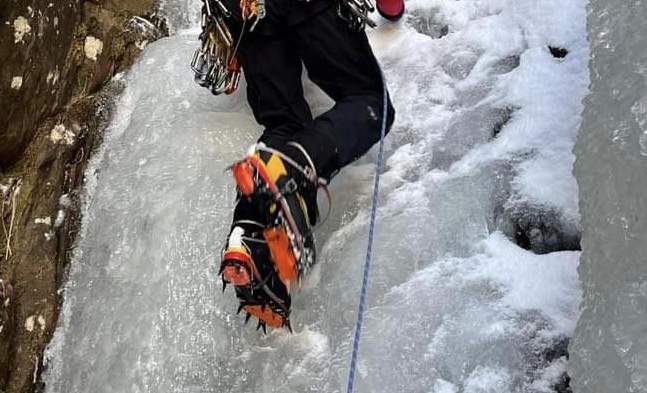
Purchased in 2012 for $525, now after 100s of winter hikes, these La Sportiva Evo Nepals still have a ton of life left in them. Worth it, we think.

Solid boots and solid traction result in a solid stance.
As such, the real question is this: Do you actually need real crampons on NH hiking trails in the winter? Well, if long sliding falls are possible, if there are real consequences to a slip and fall, if there’s hard slicked-out snow, or if there’s “boilerplate” trail ice — which often there is — we would say yes. Why mess around trying to make something like light traction work as protection when, as we know, it’s often barely adequate? Traction should make you feel secure, not “sketched out.” Just get trained.
In our opinion, using real crampons with mountaineering boots is a wise choice if you want to get out there a lot in the winter, that is. Think 2-wheel versus 4-wheel drive. If it’s a strictly fair-weather thing for you and you do your trail research ensuring you skip those days with dangerous ground conditions, we feel hiking boots and light traction or mountaineering snowshoes are fine. But if you’re a serious hiker looking to put a dozen or more hike days in NH each winter, we feel mountaineering boots are a wise investment. You’re going to find need, and, if like us, you’ll probably never look back.
Okay, I’m Going For it
When buying mountaineering boots we will offer two bits of advice:
- Get comfortable with them, you will be in them a while and it will take some getting used to. Since comfort is a concern, we suggest going with a non-plastic boot. That said, it’s easy to do since the days of the plastic double boots, outside of ski touring boots, are going away what with modern materials, closures, and fabrics. It’s a happy world for our feet.
- Next up one will ask: A single boot (shown in photo, top), or a double boot (the latter referring to a boot with a removable inner-boot)? We recommend the double if planning on going out on really cold days to climb ice or mountaineer, or if planning to camp as bringing the liners inside the wearer’s sleeping bag is important. Frozen boots can be a serious problem.
Now the next question is this: How about using an ice axe versus using trekking poles?

Photo by Rusty Talbot. Courtesy of Redline Guide Will Murphy, the climber in the photo.
